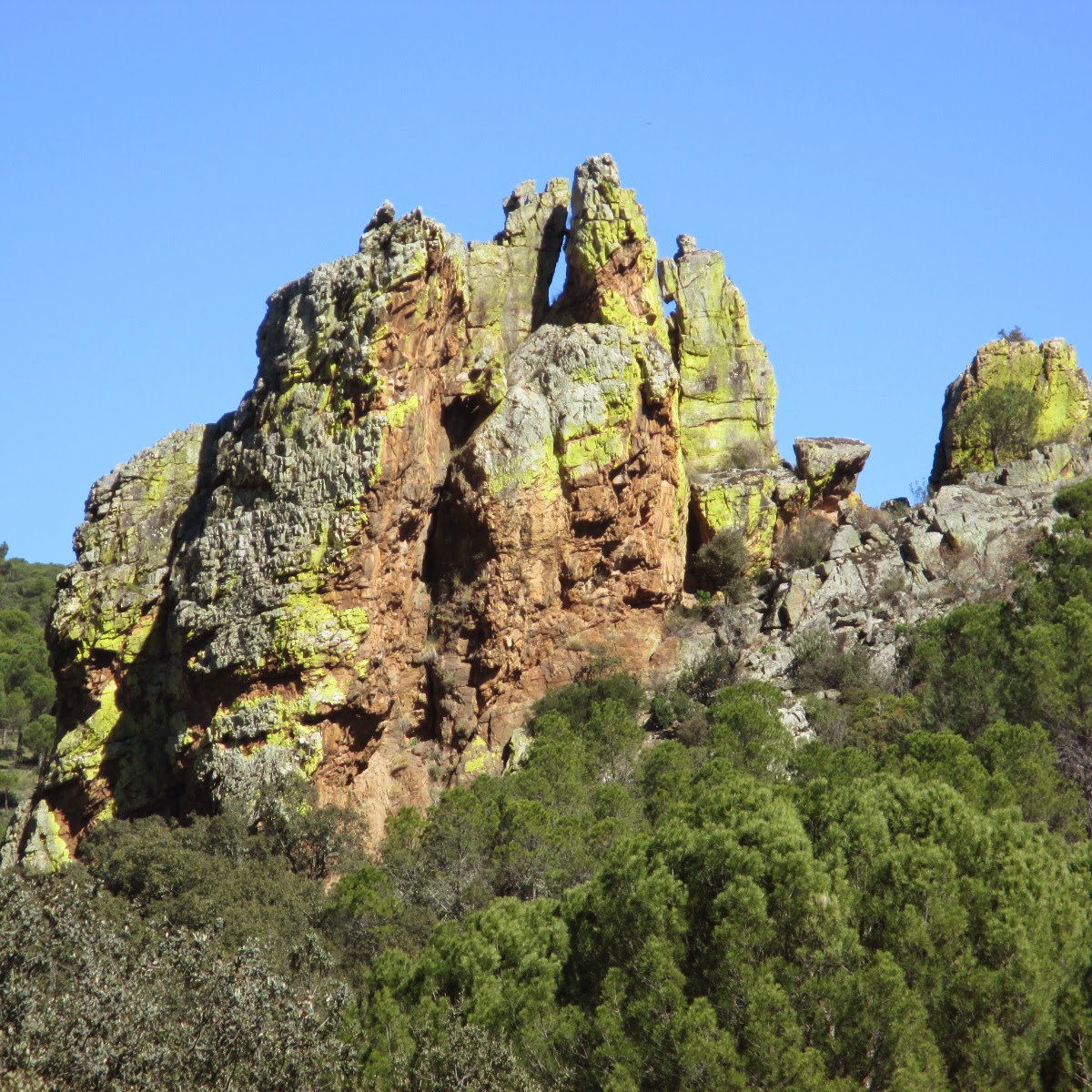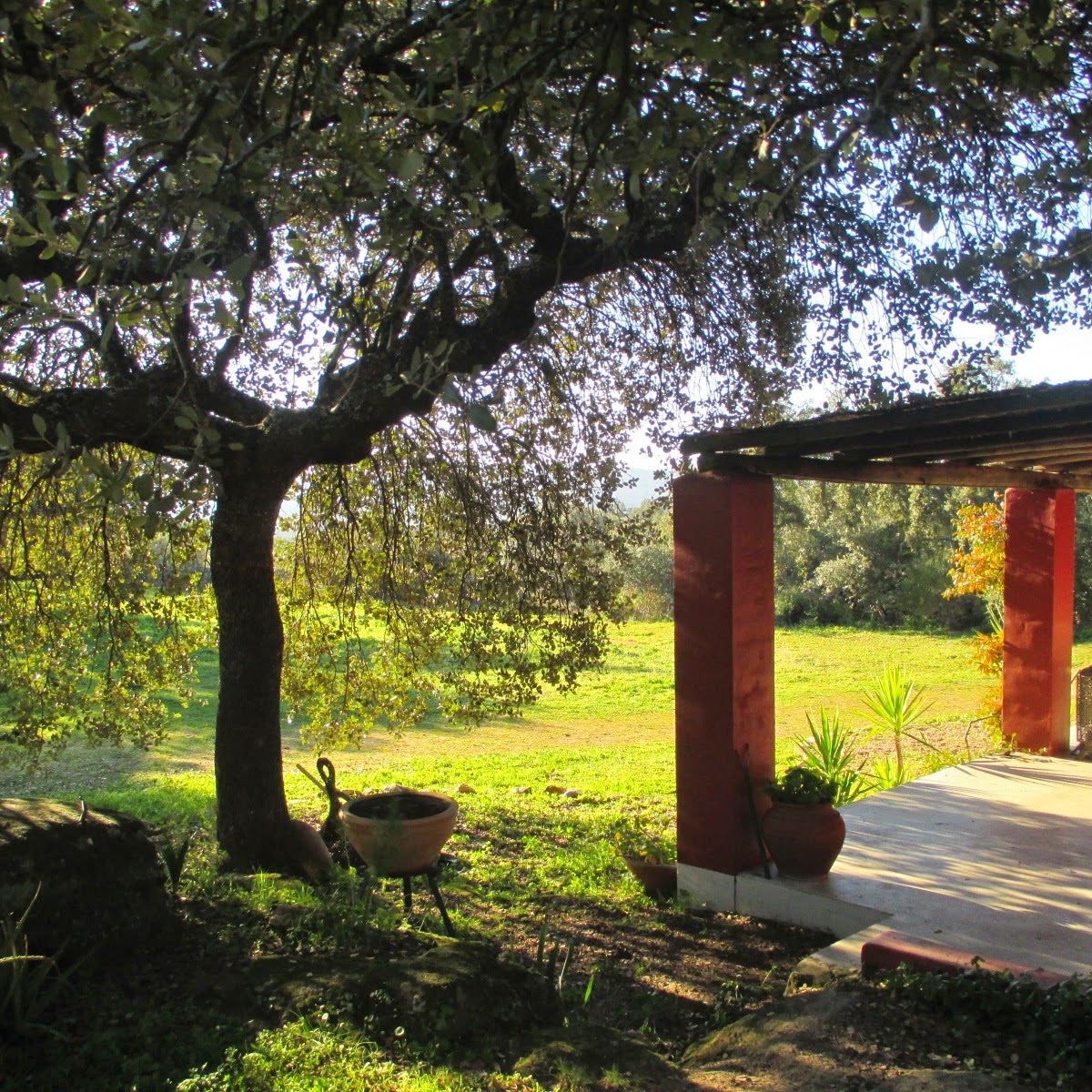The Los Barruecos Natural Monument
is in the middle of the Cáceres plain on the road to Portugal going west.
A spectacular natural
creation that man has helped to shape. The unique undulating landscape is
dotted with lakes and enormous granite boulders.
Los Barruecos has been declared a
Natural Monument because of the beauty of its landscape with strange and eerie granite formations
sculpted by water and wind.
Water has played an essential part in creating this unique natural habitat for numerous animal species, White storks and the grey herons find this an ideal place for their prolific colonies.
This has also been an ideal place for human settlement, as demonstrated by the many archaeological remains dating from the Neolithic through the Roman period and into 19th century.
Water has played an essential part in creating this unique natural habitat for numerous animal species, White storks and the grey herons find this an ideal place for their prolific colonies.
This has also been an ideal place for human settlement, as demonstrated by the many archaeological remains dating from the Neolithic through the Roman period and into 19th century.
The 18th century wool processing factory (now the Wolf Vostell museum) was a major focus for the trashumancia, the herding of sheep down to Extremadura every winter from Asturias and Galicia. Here they were shorn and the wool washed using the abundant water from a natural lake sustained by making a dam and channeling the water into a huge boiler where it was heated to wash the lanolin from the wool, it was then packed into bales and distributed all over Spain.
A number of routes have been created through this vast expanse with differing durations and itineraries.
The Peñas del Tesoro route starts at the Vostell-Malpartida Museum and ends at the Peñas del Tesoro, skirting the Barrueco de Abajo lake. This is the most popular route, lasting just 30 minutes.
A number of routes have been created through this vast expanse with differing durations and itineraries.
The Peñas del Tesoro route starts at the Vostell-Malpartida Museum and ends at the Peñas del Tesoro, skirting the Barrueco de Abajo lake. This is the most popular route, lasting just 30 minutes.
The Barrueco de Arriba route is a little
longer. This is a 1 hour route around the lake that gives it its name.
But if you are looking for something
more demanding, other routes take between 2 and 3 hours.
If you visit Los Barruecos, don't miss out on the
Vostell-Malpartida museum, which houses a unique collection, consisting mainly
of the work of the German artist Wolf Vostell who made his home and studio at an 18th century wool washing complex, a fascinating group of buildings which now house the collection.
Wolf Vostell is the
father of this museum, as he was for the Dé-coll/age technique, the European
Happening, the Fluxus Movement and video-art. His art has a special spark
to it – an unmistakable touch of originality – discover
it for yourself, art students, historians and general public visit this unique collection from all over the world, we are lucky to have it so close by.
The museum is made up of two noteworthy collections. The first of them, called Wolf y Mercedes Vostell, contains several works of art entailing elements of fetishistic symbology from our times, such as the car, television or concrete, transformed to warn us of the shadows and conflicts enclosed in the society we live in. Examples of works of this type are "Concrete Bull", "The Thirsty Dead Man" or the garden sculpture, "Why Did The Trial Between Pilate And Jesus Take Only 2 Minutes?"
The museum is made up of two noteworthy collections. The first of them, called Wolf y Mercedes Vostell, contains several works of art entailing elements of fetishistic symbology from our times, such as the car, television or concrete, transformed to warn us of the shadows and conflicts enclosed in the society we live in. Examples of works of this type are "Concrete Bull", "The Thirsty Dead Man" or the garden sculpture, "Why Did The Trial Between Pilate And Jesus Take Only 2 Minutes?"
 The Fluxus collection
– which was donated to Extremadura by the Italian collector, Gino di Maggio –
is made up of a group of 250 works by 31 North American, European and Asian
artists.
The Fluxus collection
– which was donated to Extremadura by the Italian collector, Gino di Maggio –
is made up of a group of 250 works by 31 North American, European and Asian
artists.
The whole collection by conceptual
artists contains 60 works, including pictures, picture-objects, sculptures and installations belonging to 48 artists that have had a special connection to the Vostell
Malpartida Museum activities since it started in 1976.
I have visited many times but always find a new message, something I had not noticed before. It's a great day's excursion combined with a walk around the lake and then a visit to Caceres and its monumental city.
Only 40 minutes from Finca al-manzil.
I have visited many times but always find a new message, something I had not noticed before. It's a great day's excursion combined with a walk around the lake and then a visit to Caceres and its monumental city.
Only 40 minutes from Finca al-manzil.






.jpg)













































